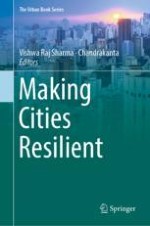2019 | OriginalPaper | Chapter
17. Role of Eco-Friendly Materials in Construction for Making Cities Smart: A Case Study of Noida and Greater Noida
Authors : Kirti Srivastava, Ashima Srivastava, Pratibha Singh, R. S. Jagadish, Roli Verma, Vidushi Jaiswal
Published in: Making Cities Resilient
Publisher: Springer International Publishing
Activate our intelligent search to find suitable subject content or patents.
Select sections of text to find matching patents with Artificial Intelligence. powered by
Select sections of text to find additional relevant content using AI-assisted search. powered by
